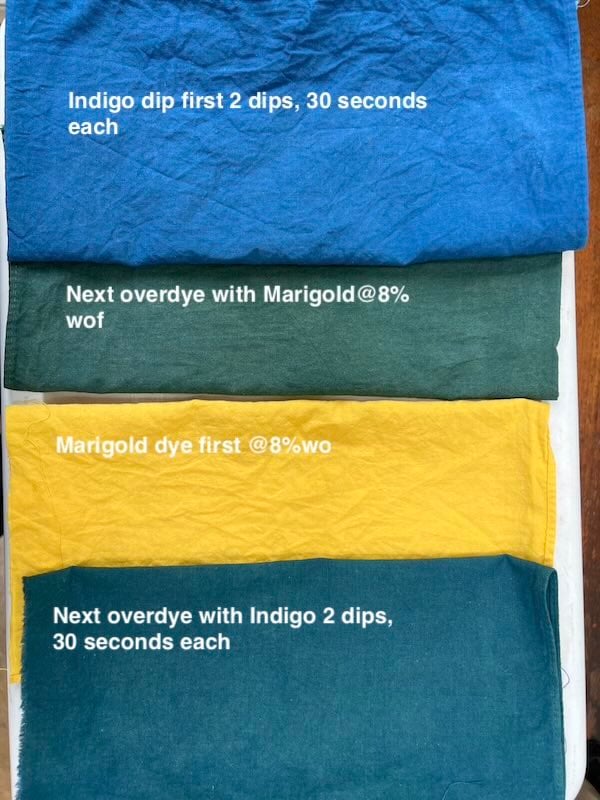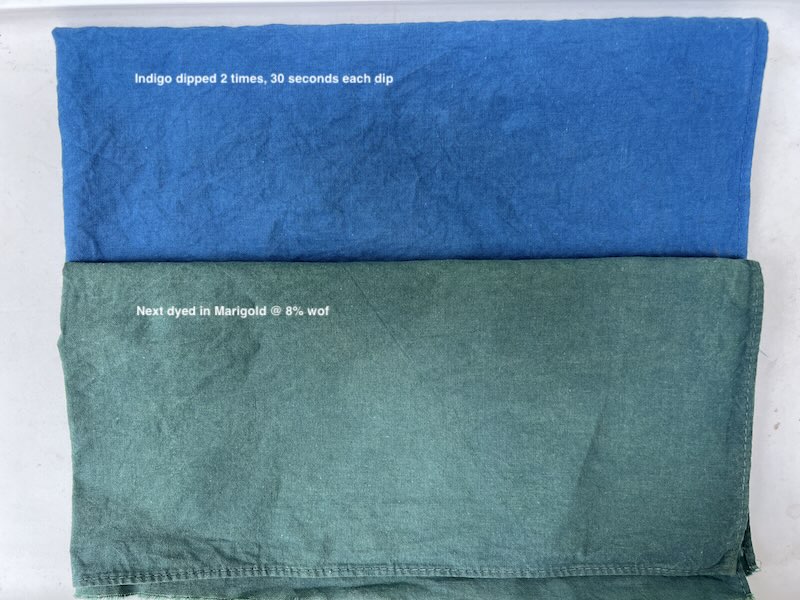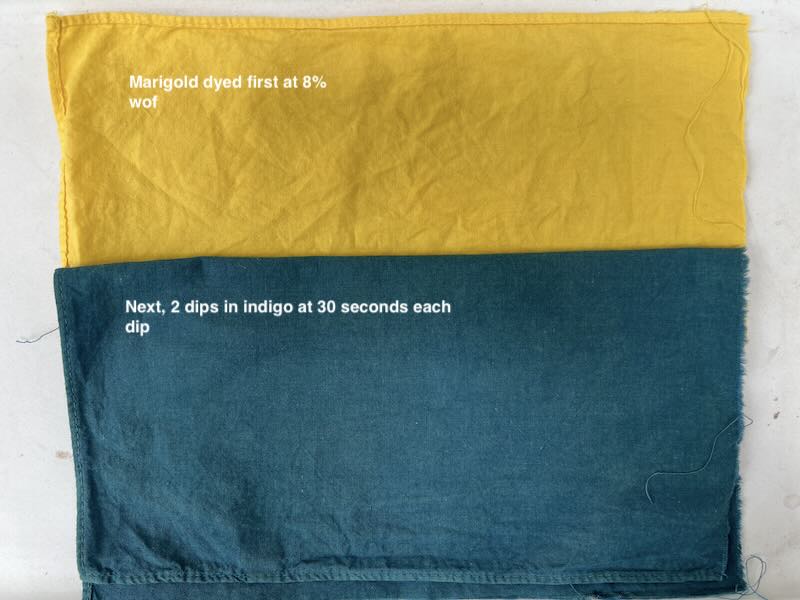We get mordant questions all the time at Botanical Colors so why not create Mordant Monday??? Got mordanting questions? Email [email protected]

YOU ASKED: Do you always dye indigo first before overdyeing with another color? Does it make any difference?
KATHY ANSWERED: When I was starting out, I was advised to dye with indigo first, rinse, mordant my fabric, and then dye with a mordant color second in order to create any type of compound color when indigo is involved. We largely agree with this as most of our production colors start with an indigo shade that we dip. We seem to get more accuracy in our colors.
I’ve met natural dyers who also do the exact opposite, which is to dye with the mordant color first, then overdye with indigo to create the shade that they want.
I wanted to try a quick test to see if there was any difference with the two methods, or if I would get the same color. This was a quick and fun experiment and I got some interesting results.
First, I grabbed a couple of our white cotton mordanted bandanas, which I like to use as I can quickly test out questions or help me figure out something I’m curious about. I weighed them and then took one and dipped it into a medium henna vat for 2 dips, 30 seconds each. I got a nice, mid-toned blue. I then rinsed it well, and tore it in half. One half I kept as my blue sample, and the other I got ready for the dye pot.
The second bandana and half of the indigo dyed bandana went into Marigold mix at 8% wof, and dyed for about 45 minutes. We’ve found that Marigold dyes quickly and usually pretty evenly, so it’s a favorite for us when we need a deep yellow in a hurry. I let it cool in the dye bath for another 20 minutes, then removed and rinsed well. Then I tore the marigold dyed bandana in half and dipped one half in indigo.

I decided to dip Marigold bandana piece the same duration as I had with the first bandana. Of course, it’s possible to dip by eye, and stop when you see the green that you want develop in the indigo vat. But I needed some sort of consistency and control in my mini-experiment, so I dipped both indigo variables the same.
RESULTS

Using the indigo first, method, I was able to achieve a green color that actually shows more green in real life than the photo.
When I dyed the marigold first, then the indigo, here’s what I got.

The indigo second sample shows that the blue overpowers the marigold, but the good news is that it makes one of my favorite colors, which is a very dark teal, or mallard blue color. If I had been dipping by eye, meaning that I stopped when I saw the same green as the indigo first sample, I probably would have only dipped once at 30 seconds. We don’t usually dip once for 30 seconds, as we find that indigo usually needs a couple of dips to create a more durable and lasting color, so in order to get 2 dips, I’d use a much weaker vat. This is a great way to use that vat that is yielding those precious sky blue shades, as it’s hard to achieve that with stronger vats.
Observations
My experiments found that dyeing first with indigo or with a mordant color does create different color outcomes. For the new dyer who wants to develop an understanding of overdyeing, I’d recommend trying both methods and seeing which is the most helpful for you to understand how to achieve the colors you want.
We haven’t conducted many tests to see if one method is more lightfast than the other, but my experience has found that it’s easier to dye a very light shade of indigo first, then overdye with a deep or bright yellow to get vivid greens. Check out our Parrot Green recipe.
Does Indigo Damage Mordants?
We explored this question last week – check it out here.
You might also like to read:
How to Dye With Indigo (to make 3 different types of vats)
Video: How to Make a Fructose Indigo Vat
Video From LIVE FEEDBACK FRIDAY: Rowland Ricketts
Shop:
